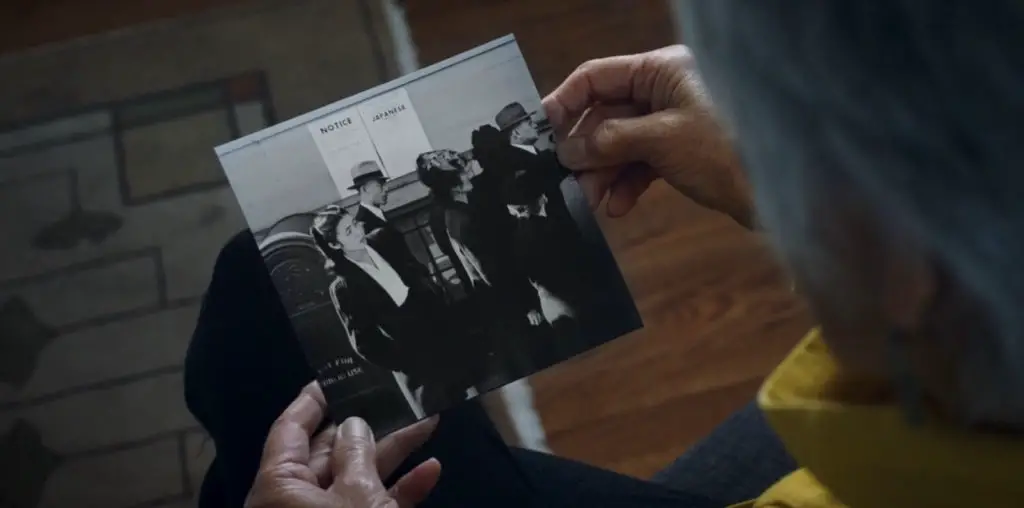
The Thousand Yard Stare is a haunted facial expression often observed in combat veterans. The “wearers” of this alarming gaze appear stunned, as if they’ve seen the unthinkable and are forever recoiling from the jolt. The Thousand Yard Stare is also a regular guest in the troubling world of legendary horror scribe H.P. Lovecraft. Exposed to unholy sights and made privy to unwanted secrets, his protagonists attempt to articulate the indescribable. And they fail. Their inability to convey these disturbing revelations is at the heart of Lovecraft’s vision.
Albert Wilmarth, the hero of Sean Branney’s “The Whisperer in Darkness,” follows this pattern. Smashingly played by Matt Foyer (whose prominent forehead worry-wrinkles enhance the performance), Wilmarth is initially presented as a pessimistic folklore professor eschewing all things Sasquatch, Loch Ness Monster, and UFO’s. Wilmarth’s perspective is soon put to the test. He receives correspondence from Henry Akeley (Barry Lynch), a Vermont farmer insisting that sinister, squid-like creatures have infiltrated his rural estate.
Predictably, Wilmarth scoffs at Akeley’s far-fetched claims. Soon, however, the notoriously cynical Miskatonic University educator notices a troubling pattern. Where Akeley was once fearful, current letters hint at an uncharacteristic resignation. The farmer describes meeting with these hillside-roaming creatures. Far from being sinister monsters with malignant intent, Akeley insists that they belong to a peaceful, extraterrestrial race. They’ve welcomed him into a magnificent new realm of knowledge and experience.
Akeley’s abrupt change of heart, however, only whets Wilmarth’s appetite for what’s really going on in those Vermont hills. Against his better judgment, this pragmatic man of science packs his bags to pay Akeley a visit. As with so many Lovecraftian scenarios, such meddling opens a disturbing Pandora’s Box. Ultimately, Things Don’t Work Out Well.
The moral of Lovecraft’s work is that curiosity kills the cat – literally, in some cases. Stuart Gordon’s “Re-Animator” (based on the 1992 story “Herbert West Re-Animator”), probably the most popular filmic adaptation of the author’s work, served up a resurrected kitty-corpse, decapitated professors, and one of the most wickedly perverse sexual scenarios ever caught on film.
Gordon’s approach was to fling Lovecraft’s unthinkable images onto the screen with gleeful audacity, inducing the Thousand Yard Stare (and often the projectile puke reflex) in his audiences. In direct contrast, “The Whisperer in Darkness” effectively suggests more than it actually shows. Branney projects his onscreen nightmares with a black and white retro style, convincingly reminiscent of vintage Universal horror films like “The Mummy.”
Shadows on a wall of SOMETHING being removed from…. SOMEONE. Brains in canisters. A wheezing old man muttering secrets… or lies? A cult ceremony performed around a surging suck-hole to another universe. Several of its images, including a sky-high, King Kong-style battle between crop-duster and aliens, come off as intentionally corny homage to pre-CGI horror films. Whether contemporary audiences will embrace or balk at this approach is left to be seen.
Ultimately, however, Branney nails the spirit of Lovecraft. Through voice-over narratives and frightened faces, “The Whisperer in Darkness” conveys a sense of human sanity being unraveled by too much forbidden fruit. By film’s end, Foyer has the Thousand Yard Stare down to a science. His once-doubting Wilmarth has picked from the Tree of Knowledge, and become a reluctant believer.

I was a background player in the train station sequences of “Whisperer” and had a great time doing it. I also saw the movie on the big screen at the Berkshire International Film Festival in Pittsfield, Massachusetts and agree with everyhing the reviewer says here. It’s an excellent movie, and succeeds where so many other Lovecraftian films have failed. Well done.